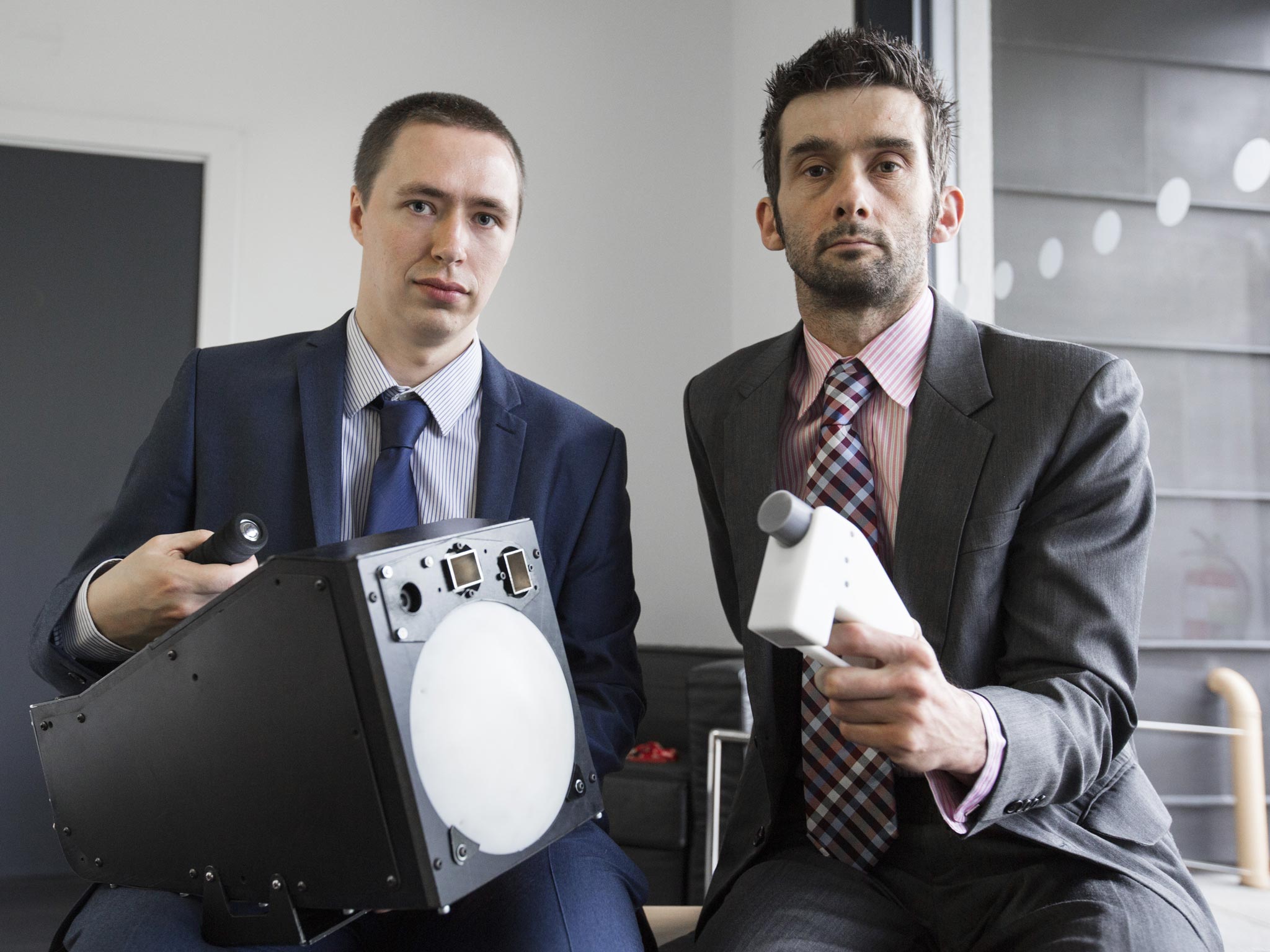How British technology could keep World Cup fans safe from gunmen

Your support helps us to tell the story
From reproductive rights to climate change to Big Tech, The Independent is on the ground when the story is developing. Whether it's investigating the financials of Elon Musk's pro-Trump PAC or producing our latest documentary, 'The A Word', which shines a light on the American women fighting for reproductive rights, we know how important it is to parse out the facts from the messaging.
At such a critical moment in US history, we need reporters on the ground. Your donation allows us to keep sending journalists to speak to both sides of the story.
The Independent is trusted by Americans across the entire political spectrum. And unlike many other quality news outlets, we choose not to lock Americans out of our reporting and analysis with paywalls. We believe quality journalism should be available to everyone, paid for by those who can afford it.
Your support makes all the difference.A mobile scanner designed to spot a 3D-printed plastic pistol hidden under a gunman’s clothing is to be used in Brazil after threats by organised criminals to disrupt the World Cup.
The scanner – initially developed by British university physicists to help undercover police identify armed London gang members – can discover hidden weapons within a couple of seconds from up to a distance of 25 metres even if the weapon has no metal parts.
The makers say that one of the units is due to be taken to Rio de Janeiro and used unobtrusively in popular public areas during the tournament to identify potential threats in one of the world’s most dangerous countries. More than 50,000 people were victims of homicide in 2012 in Brazil which has the third-highest murder rate in South America, behind Venezuela and Colombia, according to the United Nations.
The Brazilian authorities have ramped up their use of CCTV and other security measures in the run-up to the first of two global sporting events from this summer, with the Rio Olympics following in 2016. Preparations for the World Cup have been dogged by protests over corruption and the huge costs, and threats by organised criminals last year to disrupt the tournament because of complaints about prison conditions.
Senior police said the device was the first effective system to spot plastic guns made using a 3D printer which have been identified as an emerging threat to the long-term decline in violent crime in Britain. The number of gun crimes has fallen 66 per cent since a peak in violence a decade ago, with 30 people killed in 2012/13.
A US group last year released a free blueprint for a downloadable gun known as the Liberator; it can be used to create 16 components to make a gun that is all-plastic apart from a metal firing pin. The plastic guns can avoid detection when passed through metal detectors and conventional scanners.
The scanner device is being flown for rigorous testing by the US military this week to assess if it can be used to spot explosive devices carried by potential suicide bombers. Pakistan and Venezuela have also shown interest in taking the technology, according to the marketers of the scanner.
Scientists say it has an 80 percent success rate of identifying weapons. “It measures the shape, size and depth and can tell how symmetrical the object is,” said Dr Stuart Harmer, one of the developers at Manchester Metropolitan University. “Handguns and bombs don’t look like much else that’s carried.”
In a demonstration for The Independent this week, researchers showed how the system used high-frequency radio waves to scan a target and translate the radar result through a complex algorithm to assess whether it is a weapon. The user focuses on-screen cross-hairs to run over the target’s body and bleeps if it identifies a weapon, including a plastic gun. Scientists say the scanner works best if the target is moving.
During testing at the National Ballistics Intelligence Service, it could differentiate a nail-packed tub from objects such as a mobile phone, a metal scourer and a cigarette case. There are no privacy issues, as the user only sees on the screen what is visible to the naked eye, say the makers.
The developers say it has longer-term potential use as “smart” CCTV, able to scan large numbers of crowds, and suggest its use at London Underground stations to prevent killings like that of Jean Charles de Menezes, a Brazilian, who was shot and killed by officers amid erroneous suspicions that he was a suicide bomber.
Join our commenting forum
Join thought-provoking conversations, follow other Independent readers and see their replies
Comments